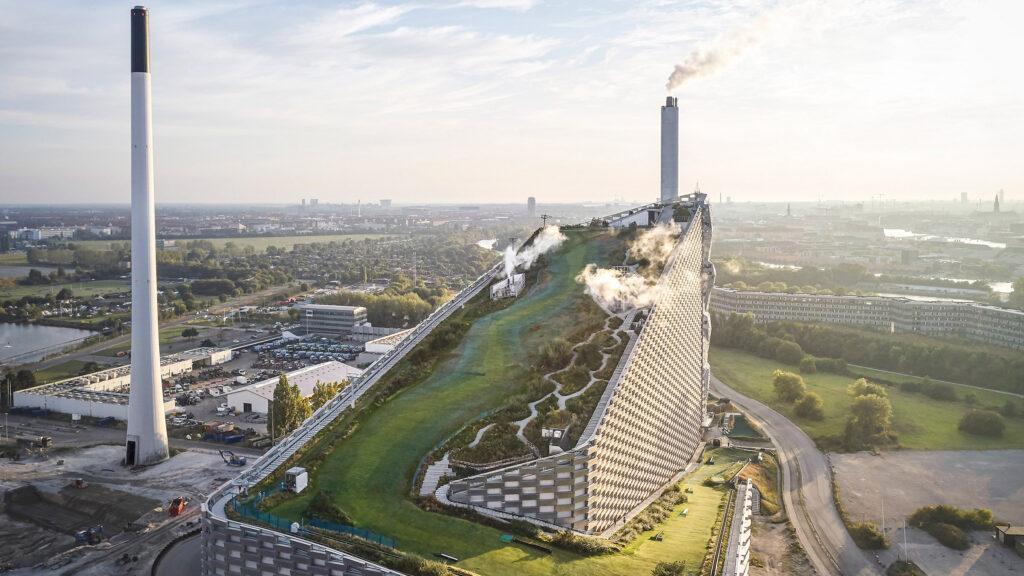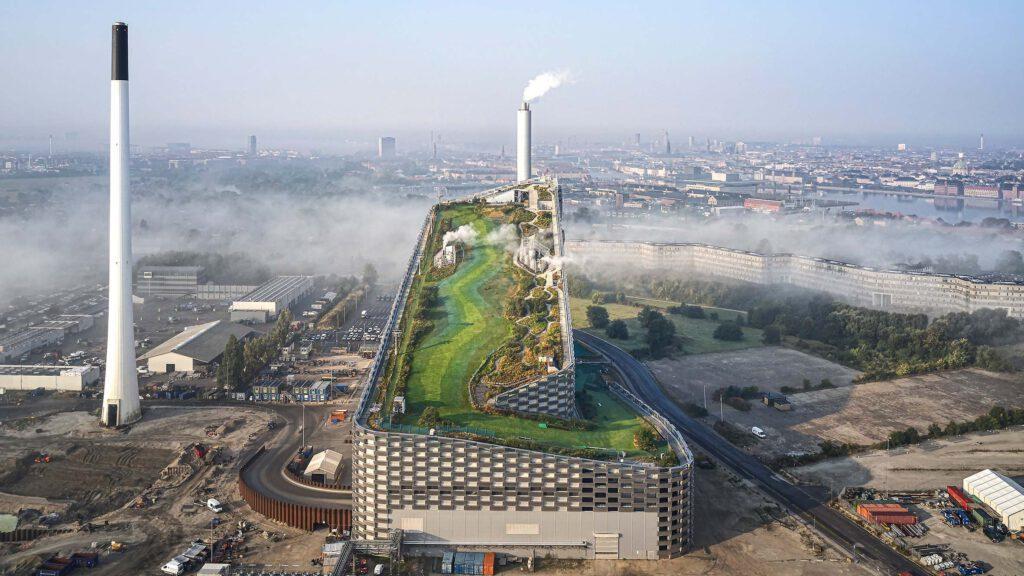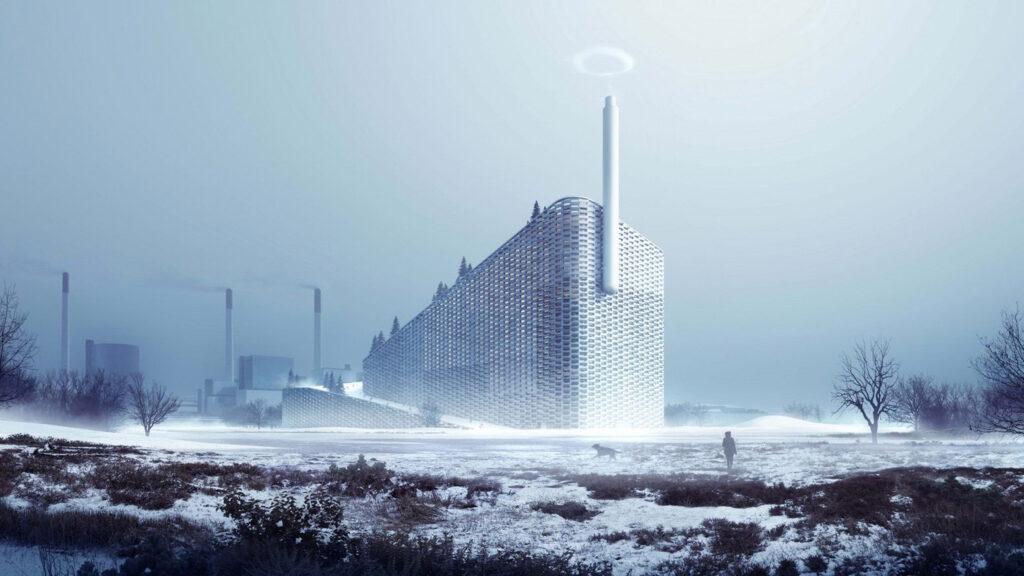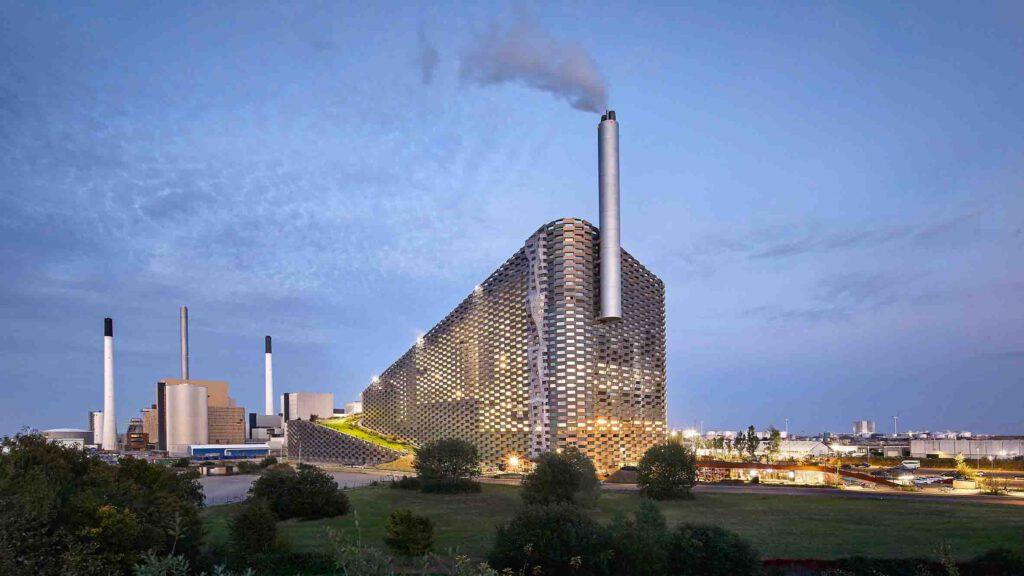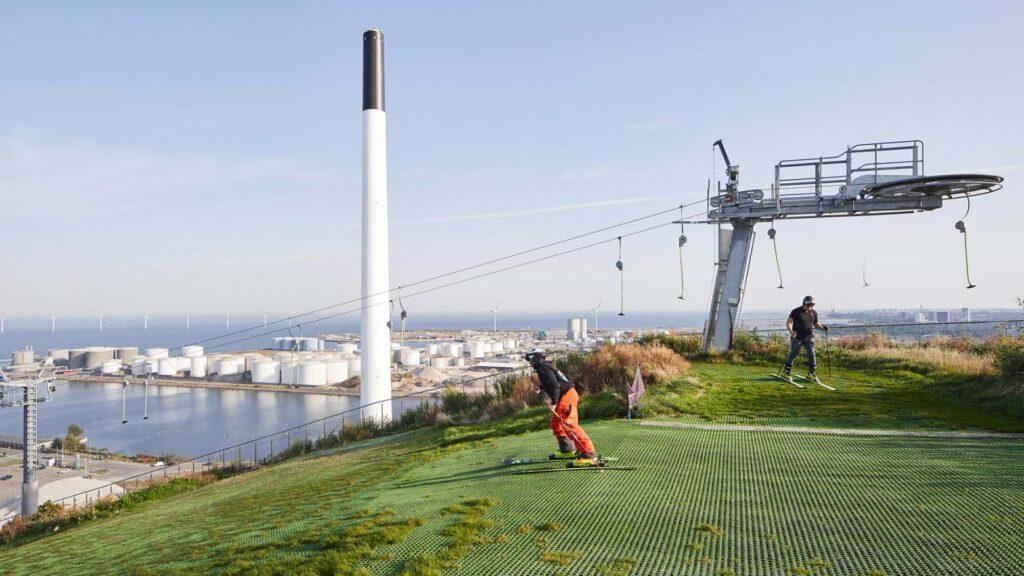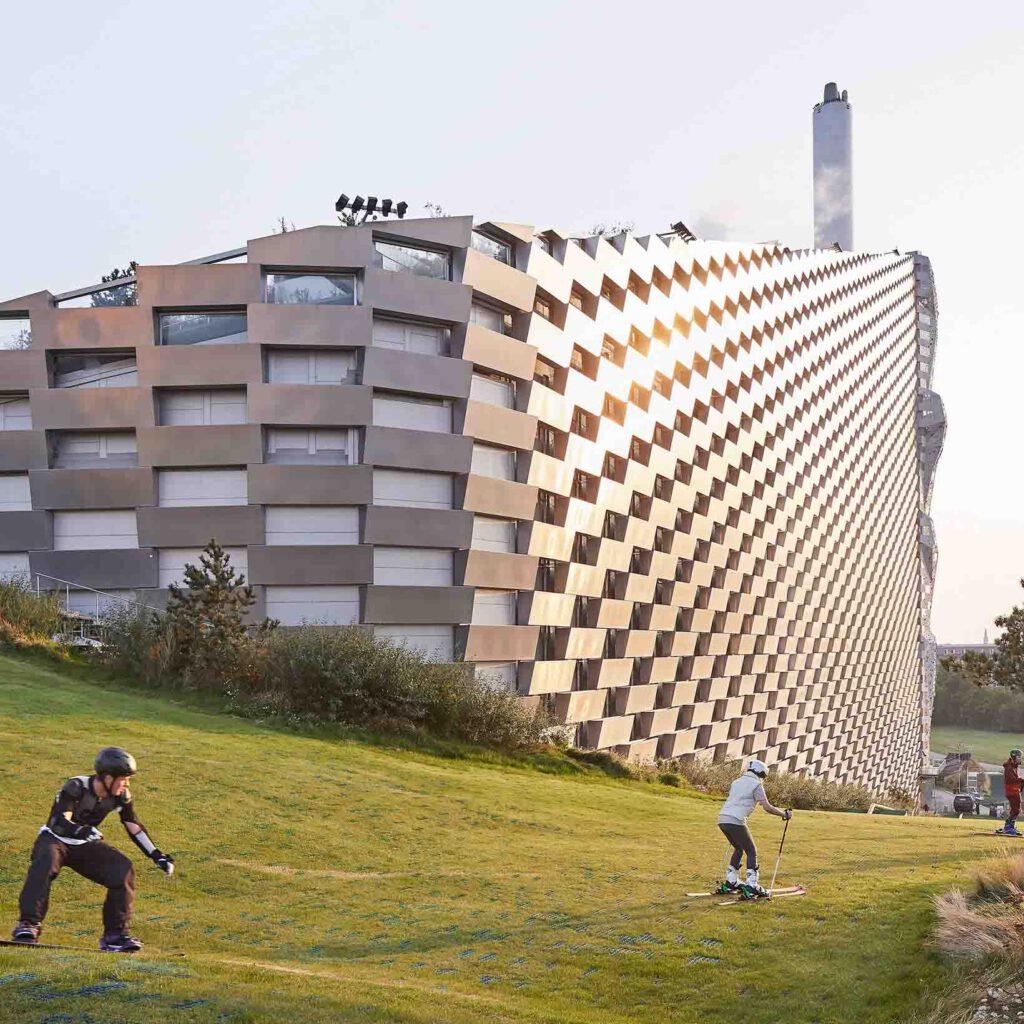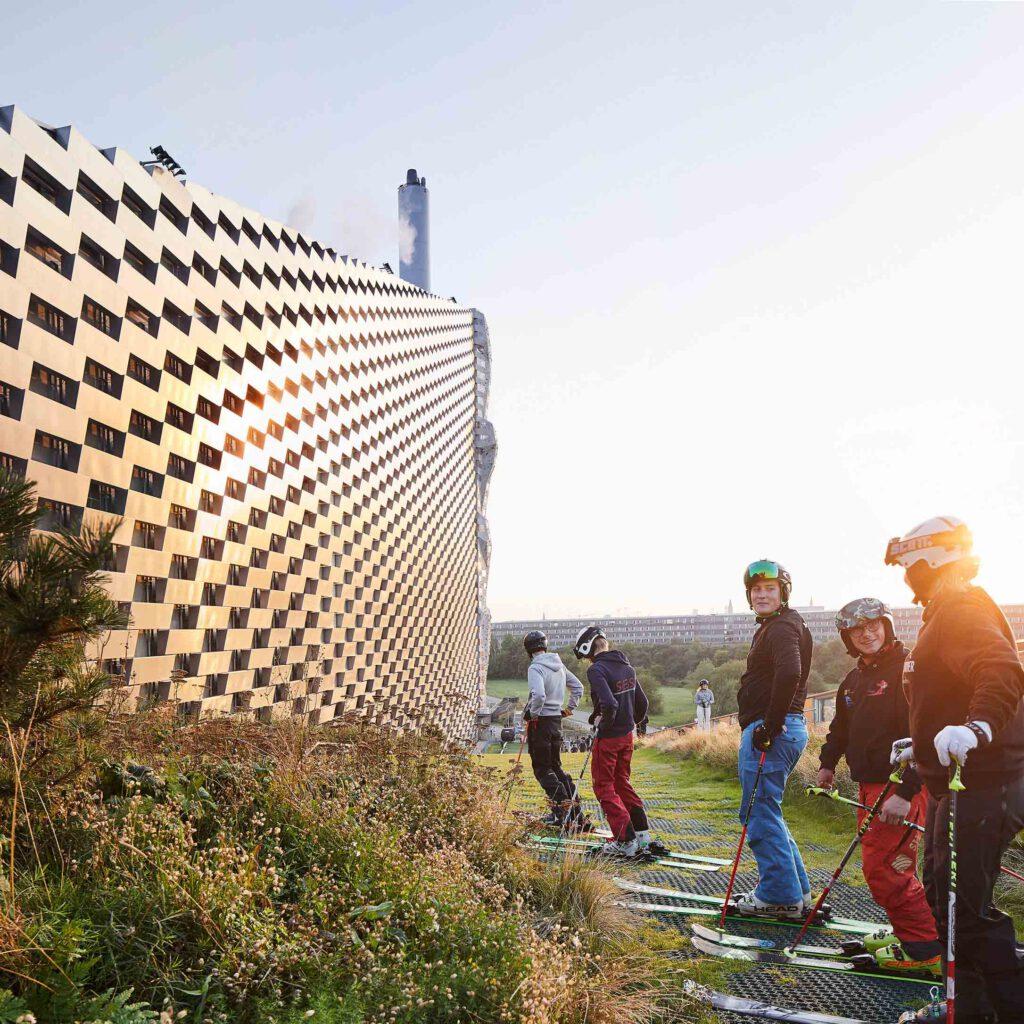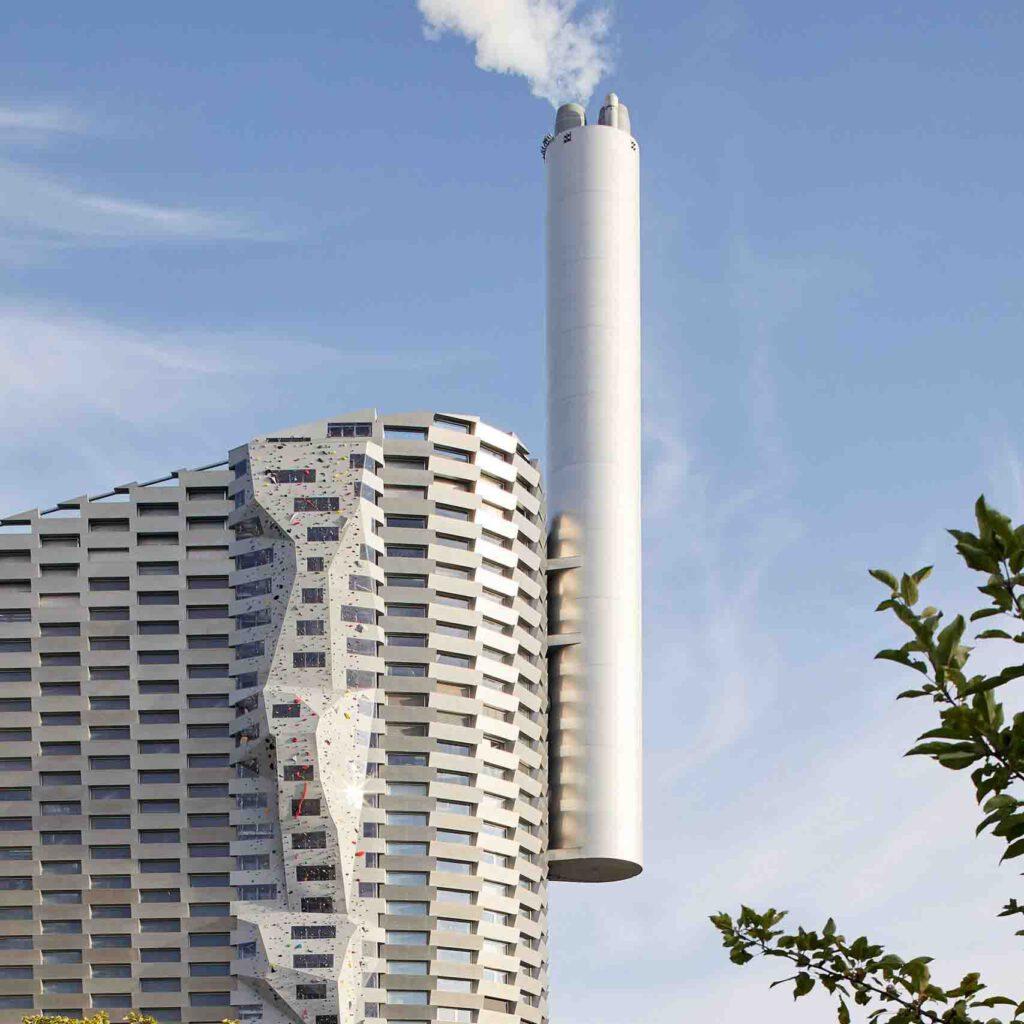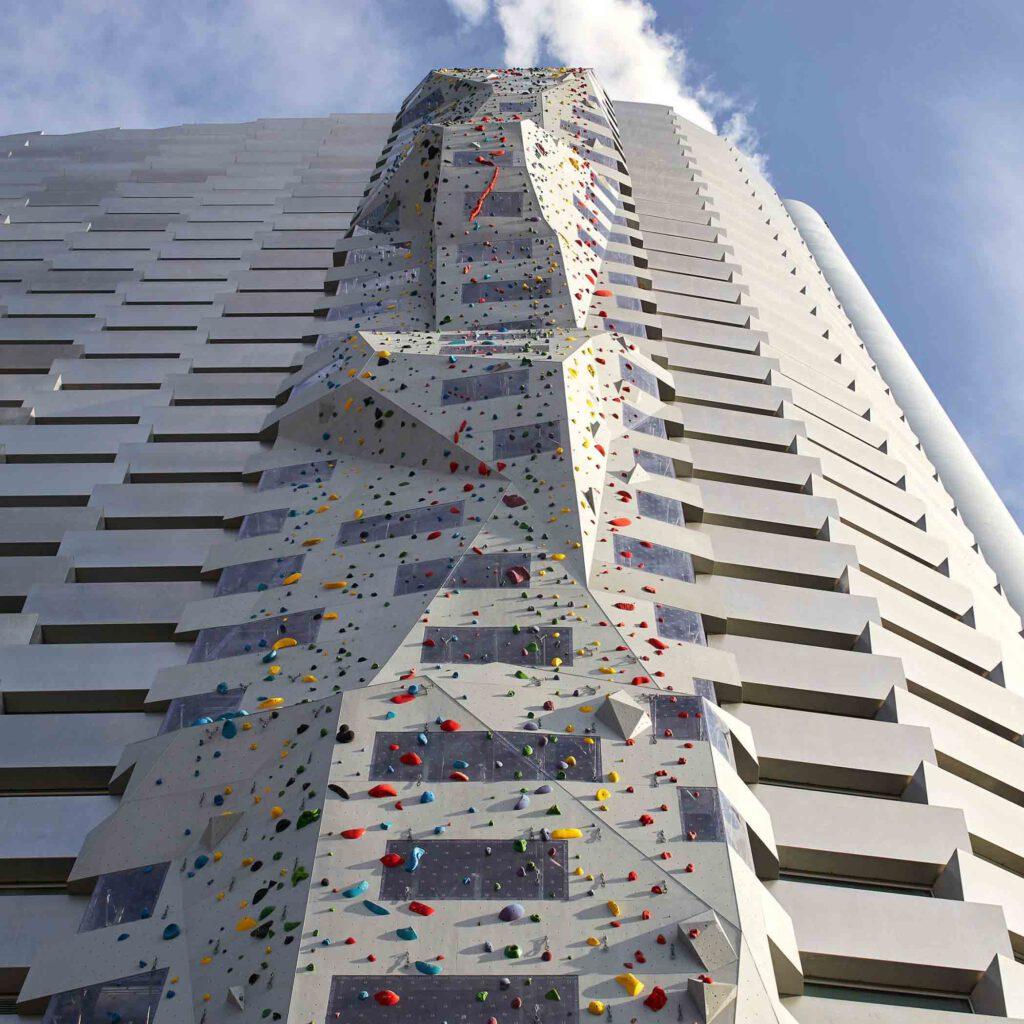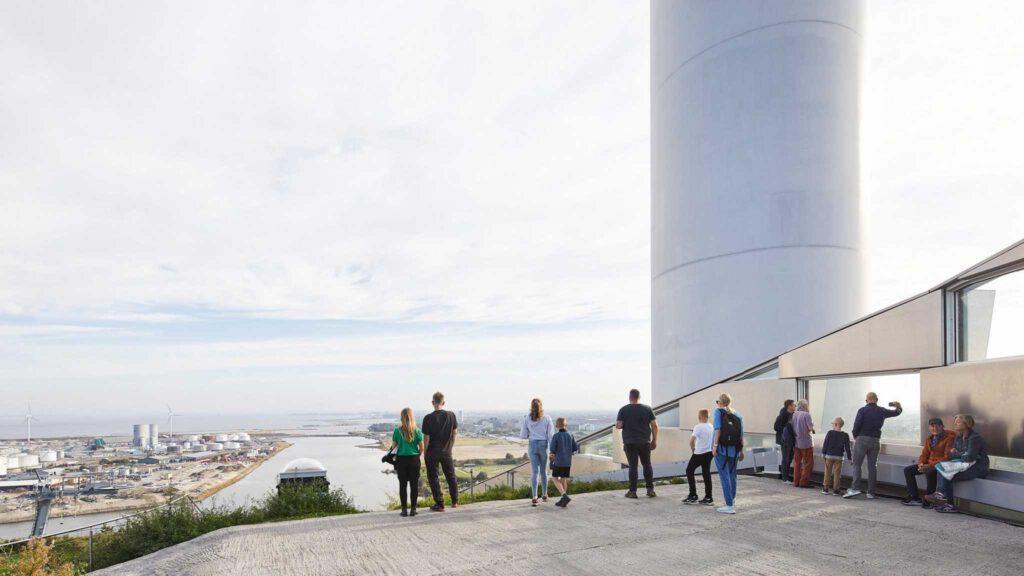Where hilltop sports meet clean energy
Traditionally, people in Denmark leave their country to go skiing. But now the CopenHill waste incinerator provides them with a ski slope all year round. Seriously! It is all thanks to a truly spectacular architectural project.
It might be coincidence. Or luck. Or the seemingly infinite vision of architectural superstar Bjarke Ingels. Whatever the case, it is thanks to him and his international architecture studio BIG that the Danes can even go skiing during the COVID-19 pandemic. After all, it was Ingels who came up with the idea of adding a ski slope to a waste incinerator in Copenhagen. The name of this unique construction: CopenHill.
CopenHill: the name says it all
The name “CopenHill” is a tongue-in-cheek reference to its bizarre nature. This is because Denmark doesn’t really have any hills to speak of. To put things into perspective, the highest “peak” in Denmark is at 170 metres, which is more of a molehill than a mountain. In spite of this, 15 percent of Danes are keen skiers.
Long before COVID-19 reared its ugly head, Bjarke Ingels developed a concept for a state-of-the-art incinerator that would make Danish people a little less dependent on international ski tourism.
440,000 tonnes of waste
This is where the CopenHill project comes in. Essentially, it is a gigantic waste incinerator called Amager Bakke that was built not far from Copenhagen. A whole host of options were explored at the outset to make the notion of a power plant for turning 440,000 tonnes of waste into energy every year more palatable to the local population. It was at this point that Bjarke Ingels and BIG joined the discussion, going into business soon afterwards. Today, Copenhagen locals are proud of having not only the most spectacular but also the “cleanest waste incinerator in the world”.
A single glance at CopenHill is enough to see that it is no ordinary building: its wedge-shaped design, sloping green roof and blocky facade of aluminium tiles – measuring 1.2 metres high and 3.3 metres wide and stacked like gigantic bricks – are not something you see every day. But inside is where it really gets technical. Here, the plant is equipped with the latest waste treatment and energy production technologies that are able to actually turn waste into clean energy. Every day, the power plant already provides 150,000 households in Copenhagen with electricity and district heating.
CopenHill with special effects
But the real selling point of CopenHill is, of course, its “special effects”. The power plant was designed by BIG to be used as a public place of recreation. As mastermind Bjarke Ingels puts it: “As a power plant, CopenHill is so clean that we have been able to turn its building mass into the bedrock of the social life of the city – its facade is climbable, its roof is hikeable and its slopes are skiable.”
He sees it as “a crystal clear example of hedonistic sustainability – that a sustainable city is not only better for the environment, it is also more enjoyable for the lives of its citizens.”
But before we get caught up in Ingels’ self-eulogizing, let’s take a close look at the most unique feature of CopenHill: the artificial turf ski slope that measures 400 metres and runs from the top of the 90-metre-high building to its base. Halfway down, you can take a 180-degree bend with a snowplough or stem turn. Needless to say, you can take a button lift or magic carpet back up to the top. But if any of the skiers want to have a look inside the waste incinerator, they can take a glass lift that goes through the inside of the power plant.
Burn that fat!
You don’t have to be a skier to love CopenHill, though: there is also a rooftop bar, a cross-fit area, an 85-metre-high climbing wall and a 450-metre mountain running track. This is all embedded in a “lush garden” designed by the SLA architectural lab with a view to creating a “vibrant green pocket” in the city where birds, bees and flowers can thrive. At the same time, the green area absorbs heat, removes harmful air particles and minimizes rainwater run-off.
Ingels feels that this interplay of many different “green” facets sets CopenHill apart as a “perfect example of the power that we have, to give form to the future that we want to live in.” As he goes on to explain: “Standing at the peak of this human-made mountain that we have spent the last decade creating makes me curious and excited to see what ideas this summit may spark in the minds of future generations.”
If, in the post-coronavirus world, anyone decides to throw an après-ski party here, they will find arguably the best venue imaginable right at the foot of the hill: the world-famous Michelin two-star restaurant Noma.
Text: Johannes Stühlinger
Translation: Rosemary Bridger-Lippe
Images: Hufton + Crow
